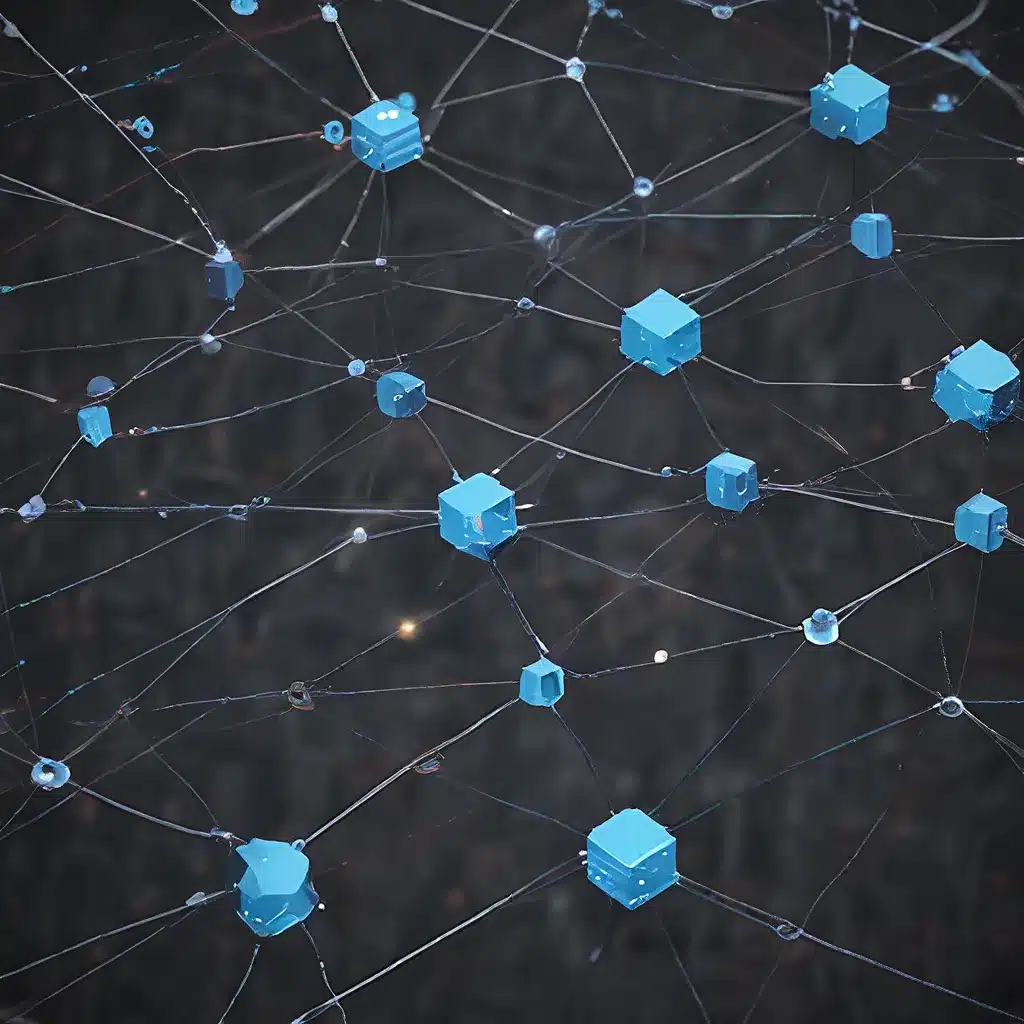
Revolutionizing Sensor Networks for the IoT Era
In the rapidly evolving landscape of the Internet of Things (IoT), sensor networks have emerged as the backbone, enabling the seamless integration of the physical and digital worlds. As the deployment of IoT devices continues to skyrocket, the need for efficient and scalable sensor network management has become paramount. This article delves into the cutting-edge research and practical applications of distributed algorithms for adaptive sensor network calibration, unlocking the true potential of IoT ecosystems.
Sensor networks have long been instrumental in a wide range of industries, from environmental monitoring and smart cities to industrial automation and healthcare. However, as the number of connected devices continues to grow exponentially, traditional centralized approaches to sensor network management are struggling to keep up. This is where distributed algorithms step in, providing a scalable and resilient solution to the ever-increasing demands of IoT.
The Challenges of Sensor Network Calibration
Sensor network calibration is a critical component in ensuring the accuracy and reliability of IoT systems. Traditionally, this process has been a labor-intensive and time-consuming task, often requiring manual intervention and on-site adjustments. As sensor networks expand in scale and complexity, this approach becomes increasingly impractical and prone to errors.
The emergence of IoT has exacerbated the challenges associated with sensor network calibration. With a vast array of heterogeneous devices and diverse environmental conditions, maintaining consistent and accurate calibration becomes a daunting challenge. Centralized control systems struggle to keep pace with the dynamic nature of IoT, leading to suboptimal performance, increased energy consumption, and potential security vulnerabilities.
Distributed Algorithms for Adaptive Sensor Network Calibration
To address these challenges, researchers have turned to distributed algorithms as a solution for adaptive sensor network calibration. These algorithms leverage the decentralized nature of sensor networks, empowering individual nodes to collaborate and self-organize, thereby reducing the burden on centralized control systems.
One of the key advantages of distributed algorithms is their ability to adapt to changing conditions in real-time. Sensor nodes can continuously monitor their own performance and environmental factors, adjusting their calibration parameters accordingly. This adaptive approach ensures that the sensor network maintains optimal accuracy and efficiency, even as the IoT ecosystem evolves.
Moreover, distributed algorithms enable scalable sensor network management. As the number of IoT devices proliferates, the distributed nature of these algorithms allows the network to seamlessly accommodate new nodes without compromising performance. This scalability is crucial in ensuring that sensor networks can keep pace with the rapid growth of IoT.
Practical Applications of Distributed Sensor Network Calibration
The benefits of distributed algorithms for adaptive sensor network calibration are being realized across a wide range of IoT applications, transforming various industries and sectors.
Smart Cities
In the context of smart cities, sensor networks play a vital role in monitoring environmental conditions, traffic patterns, and public infrastructure. Distributed algorithms enable these sensor networks to self-calibrate, ensuring accurate data collection and real-time responsiveness to changing urban dynamics. This, in turn, supports more informed decision-making and the optimization of city-wide operations.
Industrial Automation
Industrial IoT (IIoT) environments, characterized by complex machinery and dynamic operating conditions, have found significant value in distributed sensor network calibration. By empowering sensor nodes to autonomously adjust their calibration, industrial processes can maintain high levels of efficiency and reliability, reducing downtime and improving overall equipment effectiveness (OEE).
Environmental Monitoring
In the realm of environmental monitoring, sensor networks play a crucial role in tracking factors such as air quality, water levels, and wildlife patterns. Distributed algorithms enable these sensor networks to adapt to changing environmental conditions, ensuring the continuous and accurate collection of data. This data can then be leveraged to inform sustainable decision-making and proactive environmental management strategies.
Healthcare and Wearables
The healthcare industry has embraced the potential of sensor networks, particularly in the realm of wearable devices. Distributed algorithms for sensor network calibration ensure personalized and context-aware monitoring of vital signs, enabling more precise diagnoses, tailored treatment plans, and improved patient outcomes.
Unlocking the Potential of Scalable IoT
As the Internet of Things continues to evolve, the role of sensor networks will only grow more critical. Distributed algorithms for adaptive sensor network calibration represent a transformative approach that unlocks the true potential of IoT ecosystems.
By empowering sensor nodes to collaborate and self-optimize, these algorithms enable scalable, resilient, and responsive sensor networks that can keep pace with the rapidly changing IoT landscape. This, in turn, paves the way for a future where IoT applications can truly thrive, delivering unprecedented levels of efficiency, sustainability, and innovation across a wide range of industries.
To explore the latest developments in sensor networks and IoT, be sure to visit sensor-networks.org, the leading online resource for industry insights, research, and emerging technologies.